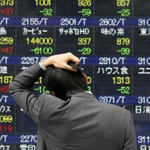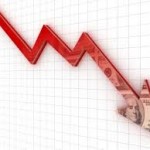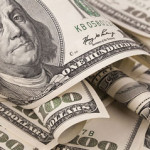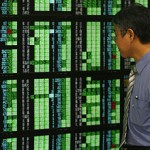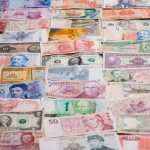Strongest Dollar in 12 Years Sinks Stocks While Oil Slips
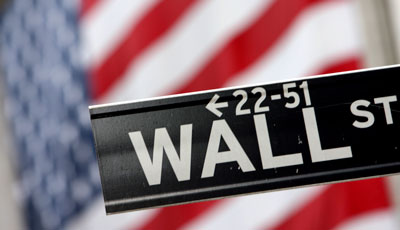
The strongest dollar in nearly 12 years versus the euro and the specter of higher U.S. interest rates fueled a selloff in global equities that sent the Standard & Poor’s 500 Index down the most since Jan. 5. Oil and copper also declined.
The S&P 500 fell 1.7 percent by 4 p.m. in New York, slipping below its average price for the past 50 days and erasing its gains in 2015. The Dow Jones Industrial Average lost 333 points, also its biggest slide since Jan. 5. The Stoxx Europe 600 Index fell 0.9 percent, as the euro weakened 1.4 percent to $1.0698 and a gauge of 20 emerging-market currencies fell for a ninth day. Yields on 10-year German securities dropped to a record, with the yield gap between 10-year Treasuries and bunds the widest since 1989. U.S. crude slid below $49 a barrel while copper dropped the most since January.
Federal Reserve Bank of Dallas President Richard Fisher said the central bank should begin to raise rates as the labor market improves. While policy makers from Sydney to Tokyo, Zurich and Frankfurt are cutting rates and buying government bonds to stimulate growth, the Fed stands out in accepting a higher exchange rate as a sign of economic strength. The dollar has rallied this year versus 15 of 16 major counterparts.
“A continuation of dollar strength and euro destruction is certainly raising some concerns,” Michael James, a Los Angeles-based managing director of equity trading at Wedbush Securities Inc., said in a phone interview. “How much is a stronger dollar going to impact the bottom lines of U.S. companies? I don’t think there was any one specific event or item that caused this. It has more to do with sentiment and emotion than valuations.”
Dollar Climbs
Selling in equities was broad based, with all but three of the 24 developed-nation indexes retreating. The MSCI All-Country World Index sank 1.7 percent, the most in two months, while 13 companies fell for each that gained in the S&P 500.
The U.S. benchmark retreated 1.6 percent last week, the most since January, as data showed the U.S. jobless rate had fallen to within the Fed’s range for what it considers full employment. Policy makers next meet on March 17-18. The index has entered the seventh year of a bull market, pushing valuations to near a five-year high. It is now down 0.7 percent in 2015.
The dollar rose against all but two of its 16 major peers Tuesday, touching $1.0697 per euro, the strongest level since April 2003. Mexico’s peso weakened to a record, while the yen touched its lowest price in 7 1/2 years. The greenback climbed to parity with Switzerland’s franc for the first time since the Swiss National Bank removed a currency cap against the euro in January.
Fed Window
“The dollar’s going up so much so fast you wonder what it does to U.S. economic growth down the road, to profitability,” Jim Paulsen, the Minneapolis-based chief investment strategist at Wells Capital Management, which oversees $338 billion, said by telephone. “Fisher made comments — that gives more support around the idea that the Fed window has indeed moved up, which is bringing a more aggressive bid to the dollar and more angst for equity investors.”
The benchmark 10-year Treasury yield dropped six basis points, or 0.06 percentage point, to 2.13 percent following a five basis-point decline on Monday. The 10-year German bund yield slid eight basis points to 0.23 percent.
The lower rates weighed on bank and insurance stocks, sending financial shares in the S&P 500 down 2.1 percent. JPMorgan Chase & Co. and Goldman Sachs Group Inc. retreated at least 2.5 percent to pace declines.
All of the 19 industry groups in the Stoxx 600 fell, with five shares declining for every one that advanced, according to data compiled by Bloomberg. Royal Dutch Shell Plc, Total SA and BP Plc dropped more than 2 percent.
Credit Suisse Group AG added 7.8 percent after naming Prudential Plc’s Tidjane Thiam to replace Brady Dougan as chief executive officer. Prudential fell 3.1 percent.
Emerging Equities
The MSCI Emerging Markets Index slid 1.6 percent, falling for an eighth day to erase this year’s advance. Mexico’s peso weakened as much as 1.1 percent to 15.6468 per dollar as currencies from South Korea to Turkey and Brazil dropped more than 1 percent.
Hong Kong’s Hang Seng China Enterprise Index slid 1.4 percent and the Shanghai Composite Index slipped 0.5 percent. While Chinese producer prices extended a record stretch of declines to 36 months, consumer prices rose faster than economists forecast in February.
Energy producers led Russia’s Micex Index down 3.7 percent to a one-month low while the ruble slipped 3 percent as trading resumed in Moscow following a holiday on Monday.
Oil’s five-day slide in London is the longest run of losses in almost three months. Brent crude settled 3.7 percent lower at $56.39 a barrel, while West Texas Intermediate declined 3.4 percent to $48.29 per barrel.
U.S. crude inventories are projected to have increased further from a record high, according to a Bloomberg News survey before an Energy Information Administration report Wednesday. Production of U.S. shale oil will expand at the slowest pace in more than four years in April, the EIA said Monday.
Copper fell 1.7 percent to settle at $2.624 a pound in New York, after factory-gate deflation deepened in China. Nickel, tin, zinc, lead and aluminum declined in London.
Source: Bloomberg – Strongest Dollar in 12 Years Sinks Stocks While Oil Slips









